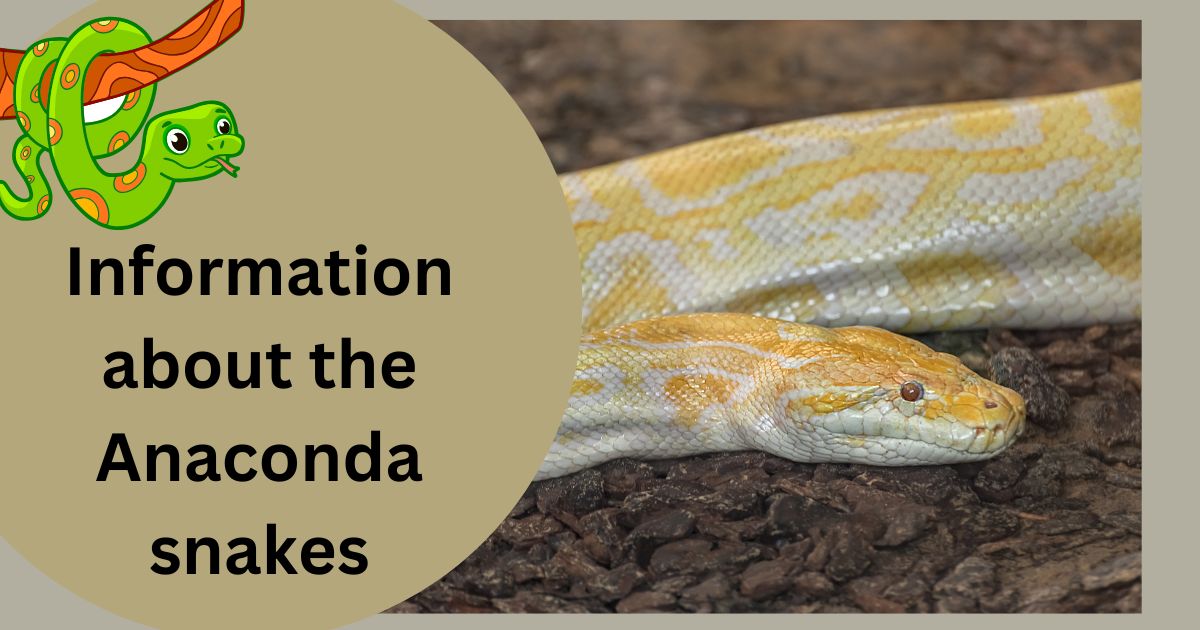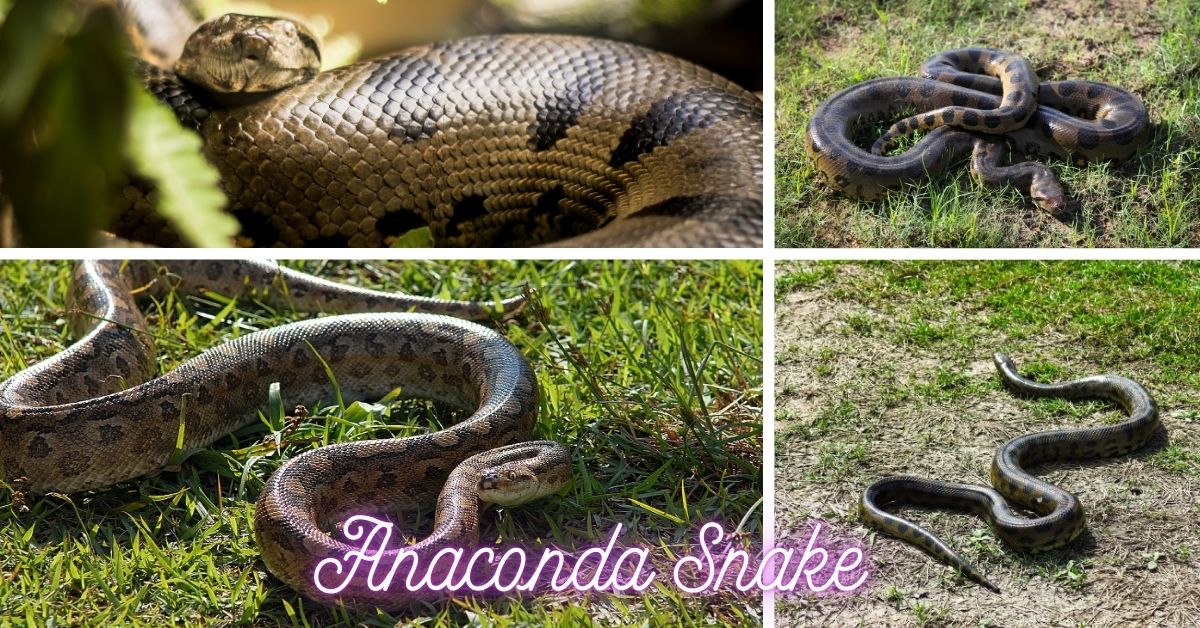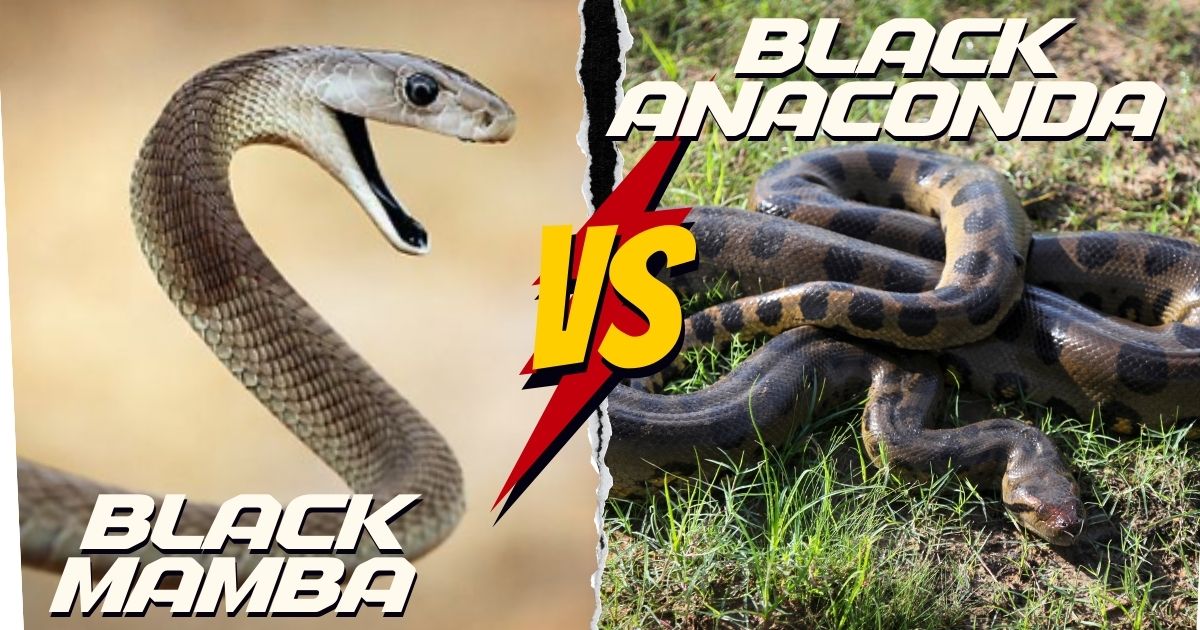
Information about the Anaconda snakes: Evolution and Adaptations
Information about the Anaconda snakes: Anacondas, the biggest snakes in the world, fascinate both analysts and devotees with their impressive size and secretive behavior. Local to the swamps and streams of South America, these powerful constrictors can grow over 30 feet long and weigh more than 500 pounds.
Known for their imposing hunting skills and aquatic way of life, anacondas play a pivotal part in their ecosystems. This presentation investigates their unique characteristics, environment, slim down, and the myths that encompass these captivating reptiles.
- What is an Anaconda Snake?
- How many and what types of anaconda snakes are there?
- Where do Anaconda snakes mostly live?
- Natural History of Anaconda
- Scientific Classification of Anaconda
- How long and powerful is an anaconda snake?
- How venomous is the anaconda snake?
- What does anaconda snake eat?
- When does anaconda snake hunt?
- Reproduction and Development of Anaconda
- Is anaconda still alive?
- What kills anacondas?
- Is anaconda harmful to humans?
- Are Anacondas the Largest in the World?
- Can Anaconda Eat a Human?
- 10 Fun Facts About Anacondas
- Information about the Anaconda snakes
- FAQ’S About Information about the Anaconda snakes
- Conclusion
What is an Anaconda Snake?
A anaconda is a huge, non-venomous snake tracked down in South America, principally known for its noteworthy size and strength. As an individual from the boa family, a strong constrictor normally possesses bogs, streams, and rainforests, where it goes after different creatures.
What is the real name of anaconda snake?
The genuine name of the anaconda snake is Eunectes. This sort incorporates a few animal varieties, the most outstanding being the green boa constrictor (Eunectes murinus).
How many and what types of anaconda snakes are there?
There are four primary types of boa constrictors:
- Green Boa constrictor (Eunectes murinus): The biggest and most notable species.
- Yellow Boa constrictor (Eunectes notaeus): More modest and tracked down fundamentally in the wetlands of South America.
- Bolivian Boa constrictor (Eunectes beniensis): A less popular animal types local to Bolivia.
- Dull spotted Boa constrictor (Eunectes deschauenseei): Tracked down in the Amazon bowl, perceived by its particular dim spots.
Every species has one of a kind qualities and living spaces, yet all offer the normal attributes of being strong constrictors.
Where do Anaconda snakes mostly live?
Anaconda snake essentially occupy the tropical wetlands of South America, especially in nations like Brazil, Colombia, Venezuela, and Bolivia. They are usually tracked down in swamps, bogs, streams, and overwhelmed woodlands, where they can undoubtedly explore both water and land. Their inclination for sea-going conditions permits them to chase actually and stay disguised from hunters.
Natural History of Anaconda
The regular history of Anacondas envelops their development, conduct, and natural job. Boa constrictors have a place with the boa family and have adjusted to a semi-sea-going way of life, fundamentally living in the thick rainforests and wetlands of South America.
Advancement
Boa constrictors are accepted to have advanced from old snakes that adjusted to oceanic conditions, creating highlights like a smoothed out body and strong muscular structure for swimming and choking prey.
Conduct
These snakes are basically nighttime and lone, frequently investing energy lowered in water to trap prey. Their eating regimen primarily comprises of fish, birds, and vertebrates, which they catch utilizing major areas of strength for them and contracting skills.
Biological Job
As dominant hunters, boa constrictors assume a critical part in their environment by controlling the populaces of their prey, consequently keeping an equilibrium in the established pecking order. Their presence demonstrates a sound climate, as they depend on different living spaces to flourish.
Scientific Classification of Anaconda
The scientific classification of the anaconda is as follows:
- Kingdom: Animalia
- Phylum: Chordata
- Class: Reptilia
- Order: Squamata
- Family: Boidae
- Genus: Eunectes
- Species:
- Green Anaconda: Eunectes murinus
- Yellow Anaconda: Eunectes notaeus
- Bolivian Anaconda: Eunectes beniensis
- Dark-spotted Anaconda: Eunectes deschauenseei
How long and powerful is an anaconda snake?
Anacondas are prestigious for their amazing size and strength. The green boa constrictor, specifically, can develop to be the biggest snake on the planet, averaging between 20 to 30 feet long, for certain people surpassing 30 feet. They can weigh more than 500 pounds, making them amazingly strong constrictors.
Their solid bodies permit them to apply gigantic strain, empowering them to quell enormous prey, like deer, capybaras, and even caimans. This blend of length and strength makes them perhaps of the most imposing snake in the animals of the world collectively.
How venomous is the anaconda snake?
Anacondas are not venomous. Rather than toxin, they are strong constrictors that quell their prey by folding over it and crushing until it chokes. This strategy for hunting permits them to actually bring down huge creatures. While they might nibble with good reason, their essential method for catching prey depends on their gigantic strength as opposed to toxin.
What does anaconda snake eat?
Anacondas have a different eating routine that incorporates an assortment of prey. They essentially eat:
- Fish: A typical food source in their oceanic living spaces.
- Birds: Frequently hunting them close to water sources.
- Warm blooded animals: They can bring down bigger prey like capybaras, deer, and even caimans.
Anacondas are artful feeders and can consume prey a lot bigger than their head because of their profoundly adaptable jaws, permitting them to gulp down creatures.
Do anacondas eat in water?
Indeed, anacondas frequently eat in water. Their semi-amphibian way of life permits them to chase and catch prey while lowered. They are gifted swimmers and can snare fish and different creatures that approach the water’s edge. In the wake of catching their prey, they regularly tighten and swallow it in the water, where they feel most at ease.
When does anaconda snake hunt?
Anacondas are essentially nighttime trackers, meaning they do the majority of their hunting around evening time. This conduct permits them to exploit the front of murkiness to snare prey. Notwithstanding, they can likewise chase during the day, particularly in cooler climate or when food is scant.
Their hunting technique frequently includes standing by without complaining in the water or among thick vegetation until prey draws near striking distance.
Reproduction and Development of Anaconda
Reproduction
Anacondas are ovoviviparous, meaning they bring forth live youthful as opposed to laying eggs. Mating ordinarily happens in the spring, and guys might participate in romance customs, including following aroma trails to track down females. During mating, a few guys might vie for admittance to a female.
Development
Subsequent to mating, the female holds the treated eggs inside her body until they hatch. The growth time frame goes on around six to seven months. A regular litter can comprise of 20 to 40 children, albeit bigger litters are conceivable. The youthful boa constrictors are around 2 to 3 feet in length upon entering the world and are completely autonomous, equipped for hunting and swimming right away.
Do anacondas lay eggs?
No, anacondas don’t lay eggs. They are ovoviviparous, meaning they bring forth live youthful. The female holds the prepared eggs inside her body until they seal, and afterward she brings forth full grown child boa constrictors. This technique for propagation shields the youthful from hunters during their initial turn of events.
Is anaconda still alive?
Indeed, anacondas are as yet alive and flourishing in their regular living spaces. They are tracked down fundamentally in the tropical wetlands, bogs, and streams of South America. Despite the fact that they face dangers from natural surroundings misfortune and hunting, their populaces keep on existing in nature. Protection endeavors are fundamental to guarantee their endurance notwithstanding natural difficulties.
What kills anacondas?
Anacondas can confront dangers from different hunters and ecological elements. Regular hunters include:
- Puma: One of a handful of the creatures equipped for bringing down a grown-up Anacondas.
- Caiman: Bigger caimans might go after more modest or adolescent Anacondas
- People: Hunting and territory obliteration present critical dangers to their populaces.
Notwithstanding these dangers, sicknesses and ecological changes can likewise influence their endurance. While they are dominant hunters, youthful boa constrictors are more defenseless against predation and ecological perils.
Is anaconda harmful to humans?
Anacondas are by and large not destructive to people. While they are enormous and strong snakes, they ordinarily keep away from human contact. There have been uncommon occasions of assaults, typically when boa constrictors feel undermined or are incited.
Be that as it may, these occurrences are phenomenal. Right at home, boa constrictors fundamentally chase more modest creatures and posture insignificant risk to people, if they are left undisturbed.
Are Anacondas the Largest in the World?

Indeed, anacondas are in many cases thought about the biggest snakes on the planet, especially the green boa constrictor (Eunectes murinus). They can arrive at lengths of north of 30 feet and weigh in excess of 500 pounds, making them bigger as far as weight and circumference contrasted with other snake species.
While the reticulated python (Malayopython reticulatus) might be longer in a few recorded cases, the boa constrictor holds the title for the heaviest. Their monstrous size and strength add to their standing as perhaps of the most considerable snake on earth.
Can Anaconda Eat a Human?
While it is hypothetically workable for a huge anaconda to consume a human, such events are very interesting. Boa constrictors principally chase more modest creatures and ordinarily keep away from people.
They are strong constrictors and can swallow prey a lot bigger than their head, however people are not piece of their normal eating routine. Most reports of boa constrictors going after people are misrepresented or include protective way of behaving as opposed to predation.
As a rule, boa constrictors present negligible danger to people whenever left undisturbed.
10 Fun Facts About Anacondas
- Size Support: The green boa constrictor is viewed as the biggest snake on the planet by weight, for certain people surpassing 30 feet long.
- Oceanic Way of life: Boa constrictors are fantastic swimmers and invest a lot of their energy in water, making them semi-sea-going reptiles.
- Strong Constrictors: They kill their prey by folding over it and contracting, applying strain until the creature chokes.
- Ovoviviparous: Dissimilar to many snakes, boa constrictors bring forth live youthful as opposed to laying eggs.
- Different Eating regimen: They eat an extensive variety of prey, including fish, birds, well evolved creatures, and, surprisingly, bigger creatures like capybaras and caimans.
- No Toxin: Boa constrictors are non-venomous; they depend on their solidarity and choking to stifle prey.
- Cover Specialists: Their dim green and earthy colored scales assist them with mixing into their marshy living spaces, making them successful snare hunters.
- Social Way of behaving: During mating season, numerous guys might contend to mate with a solitary female, frequently shaping “reproducing balls.”
- Long Life expectancy: In the wild, boa constrictors can satisfy 10 years, while those in imprisonment might live longer, at times north of 20 years.
- Social Importance: Boa constrictors hold an unmistakable spot in different fantasies and fables, frequently portrayed as fearsome animals in South American societies.
Information about the Anaconda snakes
| Category | Details |
|---|---|
| Common Name | Anaconda |
| Scientific Genus | Eunectes |
| Species | Green, Yellow, Bolivian, Dark-spotted |
| Habitat | Tropical wetlands, swamps, rivers of South America |
| Size | Up to 30 feet (9 meters) for green anaconda |
| Weight | Over 500 pounds (227 kg) |
| Diet | Fish, birds, mammals, including large prey |
| Hunting Method | Constriction (non-venomous) |
| Reproduction | Ovoviviparous (live birth) |
| Lifespan | 10-20 years in the wild; longer in captivity |
| Predators | Jaguars, caimans, humans |
| Behavior | Primarily nocturnal, solitary, aquatic |
| Conservation Status | Varies by species; some face threats from habitat loss |
FAQ’S About Information about the Anaconda snakes
What adaptations make anacondas effective hunters in their environment?
Anacondas have a few transformations that improve their hunting capacities. Their cover permits them to mix flawlessly into their amphibian and marshy natural surroundings, making it simpler to snare prey. Furthermore, their strong muscles empower them to swim quickly and hit with speed. Their adaptable jaws can open wide to swallow prey bigger than their head, and their sharp feeling of smell assists them with finding likely feasts.
How do anacondas regulate their body temperature?
Anacondas, as different reptiles, are ectothermic, meaning they depend on outside wellsprings of intensity to control their internal heat level. They frequently relax in the sun to heat up and may withdraw to water or shade to chill off. This conduct assists them with keeping up with ideal internal heat level for hunting and processing.
Are there any myths or misconceptions about anacondas?
Indeed, numerous fantasies encompass anacondas, frequently overstating their size and conduct. One normal misinterpretation is that they routinely assault people; in actuality, assaults are very uncommon and commonly happen provided that the snake feels undermined. Another fantasy recommends that boa constrictors can pound bones, yet they essentially choke out their prey instead of utilizing bone-pulverizing force.
What role do anacondas play in their ecosystem?
Anacondas are dominant hunters, assuming a pivotal part in keeping up with the equilibrium of their biological system. By controlling the populaces of different prey species, for example, fish and vertebrates, they assist with guaranteeing a quality pecking order. Their presence can show a different and flourishing environment, as they depend on a rich cluster of animal groups for their endurance.
How do anacondas communicate with each other?
Anacondas principally convey through fragrance and non-verbal communication as opposed to vocalizations. During the mating season, guys use pheromones to find females, and their actual developments can flag strength or availability to mate. While they are for the most part singular, they might assemble in bunches during reproducing or in regions with plentiful food assets.
Conclusion
In conclusion, anacondas are exceptional snakes that epitomize the miracles of variation and endurance in their amphibian surroundings. As dominant hunters, they assume an imperative part in keeping up with biological equilibrium while spellbinding the creative mind with their size and strength.
Grasping these captivating reptiles not just features their significance in the regular world yet in addition encourages a more prominent appreciation for biodiversity and preservation endeavors important to safeguard their natural surroundings.





Tech Learner I’m often to blogging and i really appreciate your content. The article has actually peaks my interest. I’m going to bookmark your web site and maintain checking for brand spanking new information.
I couldn’t resist commenting
Simply wanna admit that this is handy, Thanks for taking your time to write this.
I would also love to add when you do not surely have an insurance policy or you do not remain in any group insurance, you may well really benefit from seeking assistance from a health insurance broker. Self-employed or those that have medical conditions typically seek the help of the health insurance agent. Thanks for your short article.
Does your blog have a contact page? I’m having a tough time locating it but, I’d like to shoot you an email. I’ve got some ideas for your blog you might be interested in hearing. Either way, great site and I look forward to seeing it expand over time.
Thanks for revealing your ideas. A very important factor is that learners have an option between government student loan as well as a private education loan where it really is easier to go for student loan online debt consolidation than over the federal education loan.